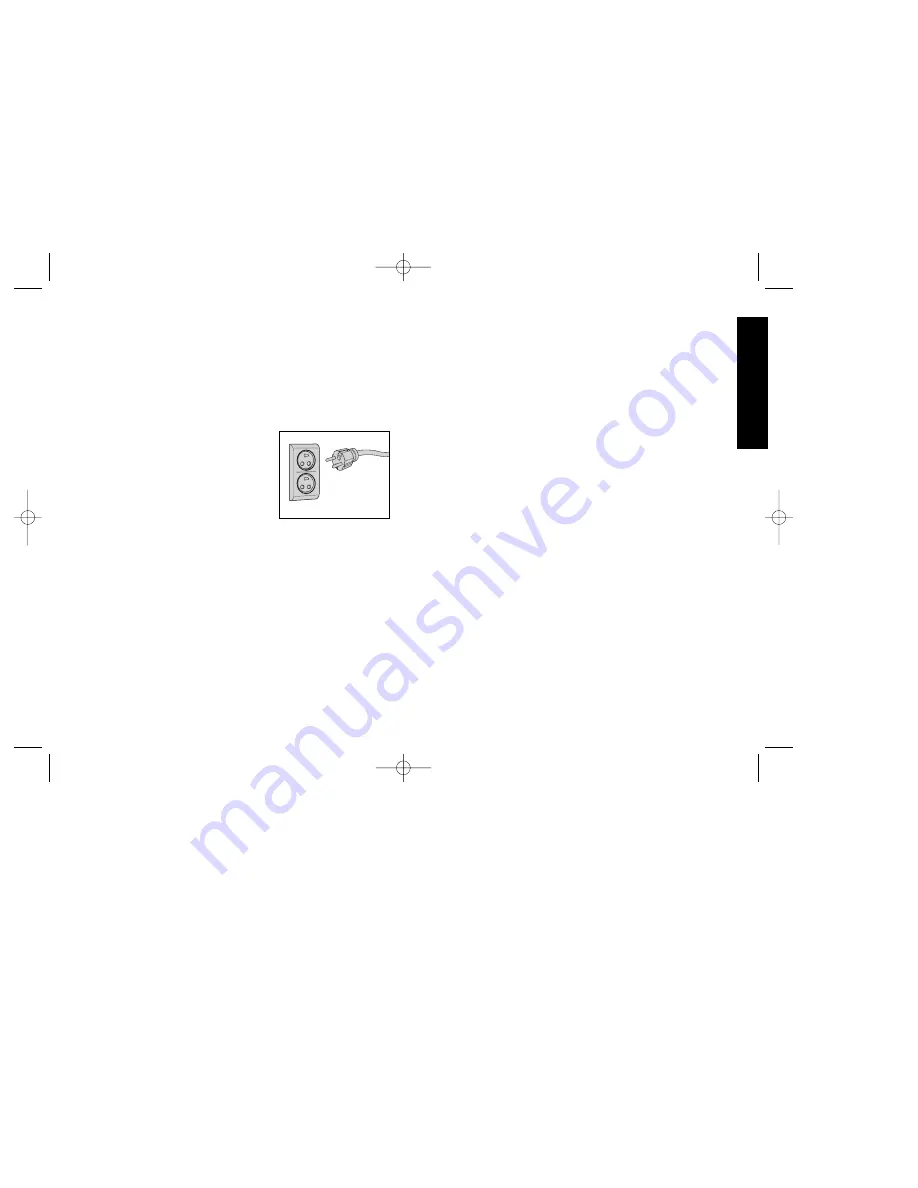
like, extending from the adapter must be connected to a permanent
ground, such as a properly grounded outlet box. No adapter is
available for a plug as shown in sketch D. ADAPTER SHOWN IN
FIGURES B and C IS NOT FOR USE IN CANADA.
Grounding Instructions
(DW494-220)
This tool should be grounded while in use to protect the operator from
electric shock. The tool is equipped with a 3-conductor cord
to fit the proper grounding type receptacle. The green (or
green and yellow) conductor in the cord is the grounding wire. Never
connect the green (or green and yellow)
wire to a live terminal.
The two grounding contacts and the
grounding receptacle in the plug must be
connected to a permanent ground, such as
a properly grounded outlet. No adapter is
available for a plug as shown in Figure A.
Safety Instructions For
All Tools
•
KEEP WORK AREA CLEAN.
Cluttered areas and benches invite
injuries.
•
CONSIDER WORK AREA ENVIRONMENT.
Don’t expose power
tools to rain. Don’t use power tools in damp or wet locations. Keep
work area well lit. Do not use tool in presence of flammable liquids
or gases.
•
GUARD AGAINST ELECTRIC SHOCK.
Prevent body contact
with grounded surfaces. For example; pipes, radiators, ranges, and
refrigerator enclosures.
•
KEEP CHILDREN AWAY.
Do not let visitors contact tool or
extension cord. All visitors should be kept away from work area.
•
STORE IDLE TOOLS.
When not in use, tools should be stored in
dry, and high or locked-up place — out of reach of children.
•
DON’T FORCE TOOL.
It will do the job better and safer at the
rate for which it was intended.
•
USE RIGHT TOOL.
Don’t force small tool or attachment to do the
job of a heavy-duty tool. Don’t use tool for purpose not intended.
•
DRESS PROPERLY.
Do not wear loose clothing or jewelry. They
can be caught in moving parts. Rubber gloves and non-skid
footwear are recommended when working outdoors. Wear
protective hair covering to contain long hair.
Air vents often cover
moving parts and should also be avoided.
•
USE SAFETY GLASSES.
Also use face or dust mask if operation
is dusty.
•
DON’T ABUSE CORD.
Never carry tool by cord or yank it to
disconnect from receptacle. Keep cord from heat, oil, and sharp
edges.
•
SECURE WORK.
Use clamps or a vise to hold work. It’s safer than
using your hand and it frees both hands to operate tool.
•
DON’T OVERREACH.
Keep proper footing and balance at all
times.
•
MAINTAIN TOOLS WITH CARE.
Keep tools sharp and clean for
better and safer performance. Follow instructions for lubricating
and changing accessories. Inspect tool cords periodically and if
damaged, have repaired by authorized service facility. Inspect
extension cords periodically and replace if damaged. Keep
handles dry, clean, and free from oil and grease.
•
DISCONNECT OR LOCK OFF TOOLS
when not in use, before
servicing, and when changing accessories, such as blades, bits,
cutters.
•
REMOVE ADJUSTING KEYS AND WRENCHES.
Form habit of
checking to see that keys and adjusting wrenches are removed
from tool before turning it on.
•
AVOID UNINTENTIONAL STARTING.
Don’t carry tool with finger
on switch. Be sure switch is off when plugging in.
•
EXTENSION CORDS.
Use only 3-wire extension cords that have
1
English
A
383763-01/DW488 rev. 7/31/2002 1:48 PM Page 1






































